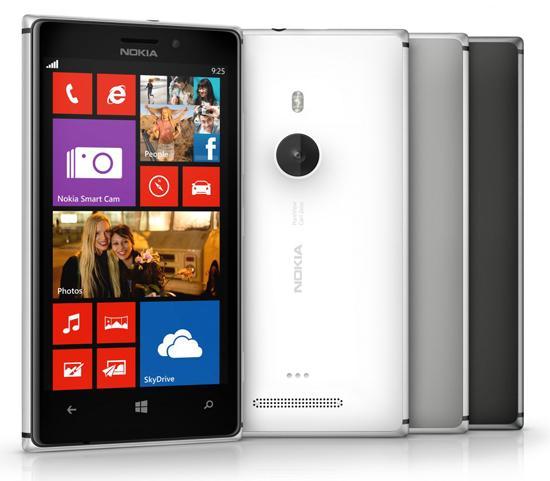
The rumored Nokia "Catwalk" which became infamous around the Web for its aluminum chassis and svelte profile just became a reality. Nokia launched the Lumia 925 at their big event in London earlier today putting to rest the tagline of "what's next" for the Lumia line. Among the aluminum frame and polycarbonate rear, the Lumia has much going for it, namely, Nokia's push that the Lumia 925 is a flagship Windows Phone which will join the Lumia 920 on AT&T and Lumia 928 on Verizon as flagship devices on three out of four major wireless carriers stateside.
But do Windows Phone flagships even matter?
I believe they do. Make no mistake, a widespread launch for a Windows Phone device of this caliber is not something we've seen any of Microsoft's hardware partners do in the past. Likewise, I might be missing the point of it for as long as the Windows Phone UI lags behind Android and iOS in the eyes of the average consumer.
I see Nokia's Lumia series as the antithesis of Samsung's Galaxy devices. Samsung has the market cornered with hardware options and a jewel of an operating system. Samsung's presence in mobile is due in part to Google's Android, with all of the criticism of the Galaxy brand centered around hardware quality. Windows Phone devices made by Microsoft's partners have rarely been under fire for poor build quality, but daily operation of the Windows Phone UI has.
So, should we give a damn about the most beautiful Windows Phone 8 smartphones to grace this planet made by one of the most prominent hardware manufacturers in the world?
Absolutely, but if 2013 turns out to be a repeat of 2012 with slow sales, Microsoft will need to question their presence in mobile indefinitely.
Windows Phone hardware has always been a bit "iffy" from my perspective. Each and every "flagship" powered by Microsoft's mobile OS has lacked follow through. The manufacturers were to blame, but it's understandable they wouldn't invest too much time and resources into a device which was likely to be held back by the operating system. The HTC Windows Phone 8X lost traction in the fact that it wasn't viewed as a flagship device by HTC despite launching on multiple carriers. Sure, it was a great handset with a solid build, but Windows Phone 8 needed more at the time. HTC has had a few shots with the Titan and Titan II as well, but neither made it out of AT&T stores which was limiting, as well as questionable hardware choices by HTC. The end result? (Cue chirping crickets.) Nada.
But Nokia's Lumia has improved on everything the Lumia 920 was criticized for, and if it fails to gather consumer attention it will not be because of the hardware. In fact, hardware has rarely come into the spotlight of smartphones running Microsoft's mobile OS. What makes the Nokia Lumia 925 a class act is its build quality and relevance to what consumers are asking for in 2013. Nokia isn't shying away from the device's design or specifications either, and they shouldn't. The Lumia 925 and Lumia 928 each weigh significantly less than AT&T's Lumia 920's 185 grams. Thickness of both devices also undercut the Lumia 920 by up to 2 millimeters. And the camera technology, displays, and battery capacity each highlight the devices as formidable upgrades to AT&T's version. That's not to say the Lumia 920 isn't a viable flagship because it clearly is the epitome of Windows Phone 8 on AT&T's network, it's just ready for a refresh.

Now it's about Nokia's fine-tuning of the Lumia series to go tit for tat with the iPhone 5 and HTC One from a hardware perspective.
I recently wrote about the Verizon-bound Nokia Lumia 928's tagline of "best low-light smartphone camera" and labelled hardware synergies the way to go for Windows Phone to gain traction in the mobile market. With that said, Nokia's confidence in mobile is not a new strategy; it's just more applicable to the year 2013 as build quality and unique attributes like waterproofing and premiumness come into play.
This year, Nokia has a lot riding on its Lumia line, and it's even more important to Microsoft how Nokia devices sell. Flagship devices like the Lumia 928 for Verizon, Lumia 925 for T-Mobile, and Lumia 920 for AT&T all put Windows Phone in a positive light despite two out of three being carrier exclusive devices.
Knowing this, Microsoft's enthusiasm of its mobile OS has never been in question, but their software support has. Windows Phone is due for an update which we'll probably see at the end of next month at their Developer Conference in San Francisco.
But is it enough to usher along the next generation of Lumia devices and push Windows Phone to the forefront of the mobile market?
If there's any time for Microsoft to solidify the third place spot in the mobile market, it is now. The new Lumias and aggressive pricing of budget devices like the Lumia 520 have made Windows Phone an easy recommendation for first-time buyers, and fans of a simple UI. Sure, the Lumia 928 may be getting the better bargain with its Xenon flash and built-in wireless charging, but Nokia isn't shying away from the challenge of chipping away at Android's dominance, or iOS' installed base.
Once upon a time, I criticized the Lumia 920 for its lack of availability and weight as compared to the HTC Windows Phone 8X, then my favorite WP8 device. However, the "Lumia attitude" has swayed me to the Nokia camp. I've been in the market for a Windows Phone 8 smartphone for a while, but a lack of hero devices has delayed my decision. Now that's no longer an issue.
Your move, Microsoft.